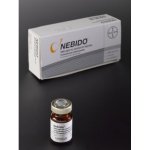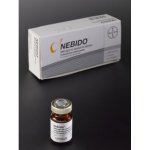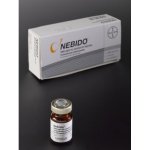- Joined
- Jun 19, 2013
- Messages
- 6,376
Most of you are quite familiar with the concept of TRT. I’ll swiftly explore what Testosterone Replacement Therapy (TRT) is, discuss factors for establishing an effective TRT regimen, and highlight the advantages of Testosterone Undecanoate (Nebido).
Hypogonadism can result from issues with the testicles or the pituitary gland, which regulates testicular function. Testosterone replacement therapy, which can be administered as injections, pellets, patches, or gels, can help alleviate symptoms of low testosterone.
While many prescribe Testosterone Enanthate and Cypionate for TRT, Testosterone Undecanoate, marketed as Nebido, is often considered the gold standard. Testosterone Undecanoate has a longer ester than Enanthate and Cypionate, resulting in a much longer half-life of 24-32 days. This allows for less frequent injections, typically once every 4 weeks, to maintain stable serum testosterone levels. This makes it a more practical option for individuals who need assistance with injections or frequently travel or work remotely.
A typical TRT dosage of Testosterone Enanthate or Cypionate averages around 200 mg per week. The exact dosage requires trial and error to achieve the sweet spot for each individual. Testosterone Undecanoate has a higher molecular weight compared to Testosterone Enanthate and Cypionate, hence it requires about 15-20% higher dosage. This translates to an average dosage of 1000 mg every 4 weeks.
Understanding Testosterone
Testosterone, primarily produced in the testicles, is the key androgen hormone. It is vital for male development during puberty and continues to play an essential role in maintaining men’s health, including:- Bone density
- Fat distribution
- Muscle strength and mass
- Facial and body hair growth
- Red blood cell production
- Sex drive
- Sperm production
The Decline of Testosterone with Age
Testosterone levels peak during adolescence and early adulthood, then begin to decline by about 1% per year after the age of 30 or 40. It's important for older men to determine whether this decline is due to normal aging or hypogonadism.Hypogonadism can result from issues with the testicles or the pituitary gland, which regulates testicular function. Testosterone replacement therapy, which can be administered as injections, pellets, patches, or gels, can help alleviate symptoms of low testosterone.
Do Naturally Declining Testosterone Levels Cause Aging Symptoms?
Not necessarily. While aging men may experience changes in sexual function, physical condition, and emotional health, these might not be solely attributed to lower testosterone levels. Other factors, such as medication side effects, sleep apnea, thyroid issues, diabetes, or depression, can also cause similar symptoms. Therefore, it's crucial to conduct a blood test to accurately diagnose low testosterone.Can Testosterone Therapy Enhance Youth and Vitality?
Testosterone therapy can reverse the effects of hypogonadism and restore vigor, health, and vitality. However, its benefits for otherwise healthy older men remain controversial. Some men with normal testosterone levels may feel more vigorous and youthful with therapy, but evidence supporting its use in healthy aging men is limited. The American College of Physicians notes that testosterone therapy may improve sexual function in some men with low normal testosterone levels but shows little evidence of enhancing other functions like vitality and energy. As a rule of thumb, any man experiencing some of the symptoms mentioned above should test both serum testosterone levels and free testosterone levels. I'll specify more on what total testosterone levels vs. free testosterone levels are separately. A total testosterone score below below 15 nanomoles per liter (nmol/L), or free testosterone levels below 0.3 nmol/L, should consider TRT.Practical Aspects of TRT Usage
The most effective method of testosterone administration often involves injections, which help mimic normal healthy testosterone serum levels. Traditional injection TRT uses Testosterone Enanthate or Testosterone Cypionate, both long-acting testosterone esters (Testosterone Depot). These esters are chemically bound to testosterone, keeping it inactive until the body’s enzymes release active testosterone into the bloodstream. Testosterone Enanthate has a half-life of 6-7 days, and Testosterone Cypionate has a half-life of 7-8 days, requiring weekly injections to maintain stable serum testosterone levels.While many prescribe Testosterone Enanthate and Cypionate for TRT, Testosterone Undecanoate, marketed as Nebido, is often considered the gold standard. Testosterone Undecanoate has a longer ester than Enanthate and Cypionate, resulting in a much longer half-life of 24-32 days. This allows for less frequent injections, typically once every 4 weeks, to maintain stable serum testosterone levels. This makes it a more practical option for individuals who need assistance with injections or frequently travel or work remotely.
A typical TRT dosage of Testosterone Enanthate or Cypionate averages around 200 mg per week. The exact dosage requires trial and error to achieve the sweet spot for each individual. Testosterone Undecanoate has a higher molecular weight compared to Testosterone Enanthate and Cypionate, hence it requires about 15-20% higher dosage. This translates to an average dosage of 1000 mg every 4 weeks.




























































































